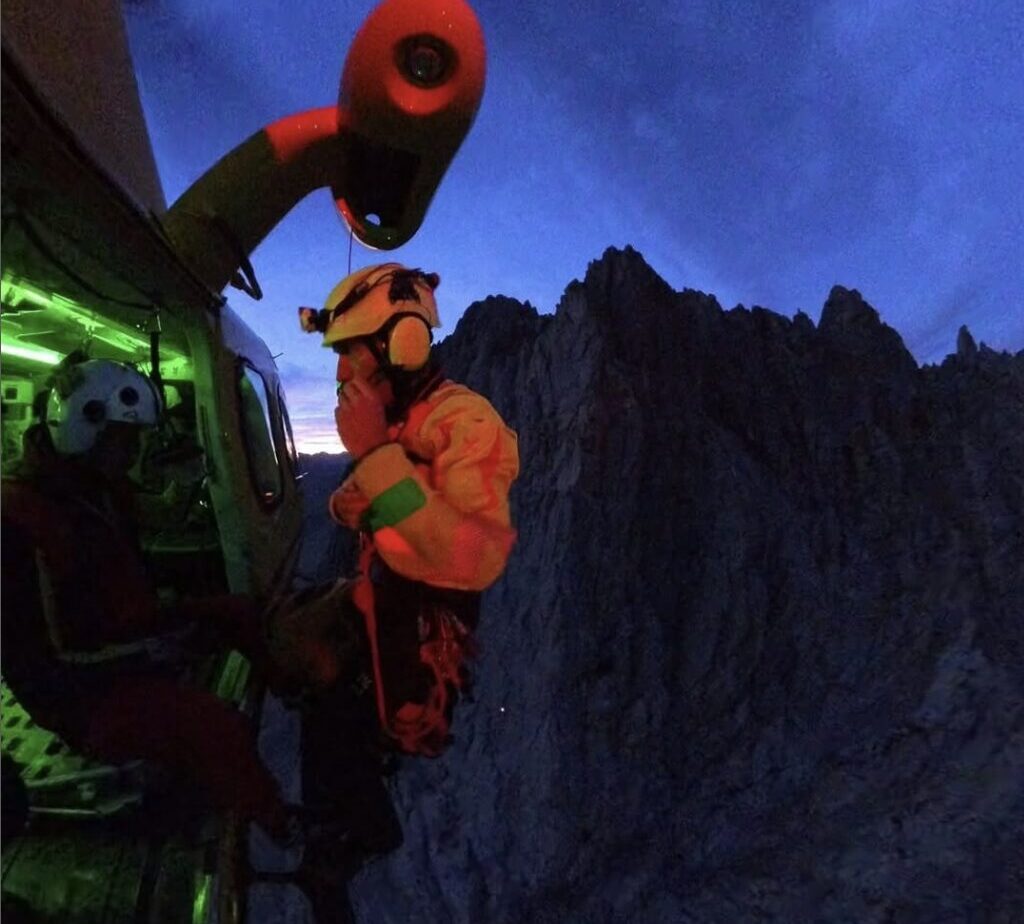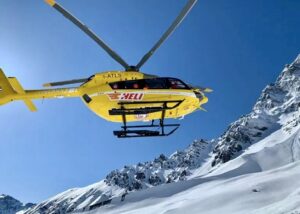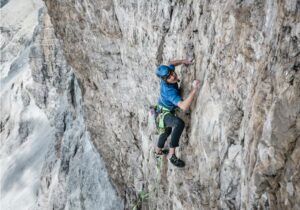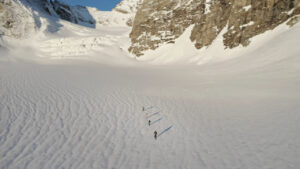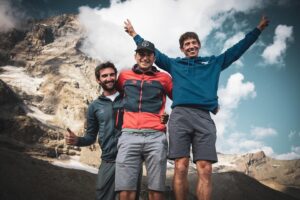The Italian media are calling it a hecatombe — massacre. At least 83 people have died in the Italian Alps between June 21 and July 23, and five others are missing. That averages out to almost three deaths a day.
Two more this week
This week added two more victims to the list. Last Friday, a 60-year-old man fell to his death at a cable-and-bar section of the Viel dal Pan trail, near the Marmolada in Val di Fassa, and a German woman died in a 100m fall from the Colle della Lace in the Aosta region, Sky-Tg24 reported.
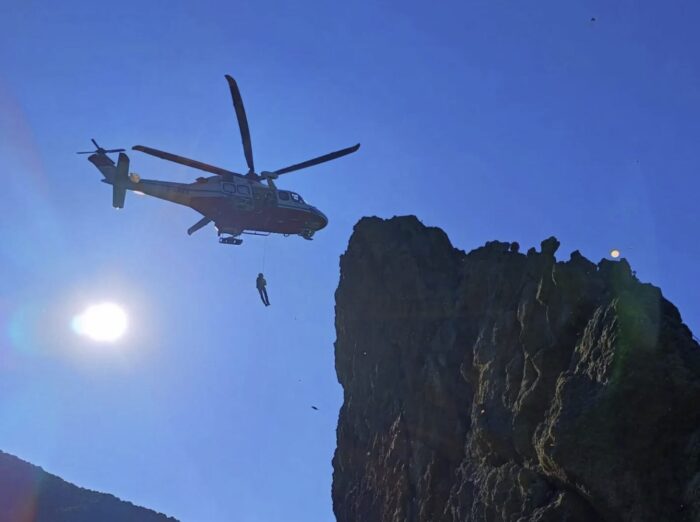
An aerial rescue operation at the Ferrata Rocca dei Corvi in the Viola Saint Gree. Photo: CZSAS
In addition, the number of rescue operations on the Italian side of the Alps and in Italy’s Dolomites is 20% higher than last year, Maurizio Dellantonio, chief of the Corpo Nazionale de Soccorso Alpino e Speleologico (CNSAS), told El Corriere della Sera. Hikers make up the highest number of victims, followed by alpinists, cyclists, and paragliders. Some people also ventured into the mountains with health issues and suffered fatalities, RSI reported.
The weather in the European Alps has been unstable so far this summer, especially in the afternoons, and many stormy spells have swept through. This week, members of the CNSAS rescued two climbers stuck at 4,400m on Monte Rosa, in high winds and snow. They were taken to the hospital with hypothermia.
Ill-equipped and inexperienced
Generally speaking, increasing numbers of visitors mean more accidents in all the world’s mountains, especially since the COVID pandemic in 2020-21. Inexperienced visitors also flock to the outdoors, drawn by spectacular images on social media. Dellantonio cites the example of a 30-year-old man who tried to climb a 3,600m peak wearing only running shoes. “He had to call for help during the night because he was cold,” Dellantonio explained.
The photo below shows a recent incident: On July 18, a Korean couple (ages 68 and 60) accidentally strayed onto the difficult Via Ferrata Constantini without a harness or safety gear. They called rescue services after nightfall, and a translator from the Korean embassy eventually told them to wait until morning for rescue. Instead, they tried to descend on their own in the dark and got stuck on a ledge. The Koreans were (very) lucky to be rescued and airlifted out in the morning.
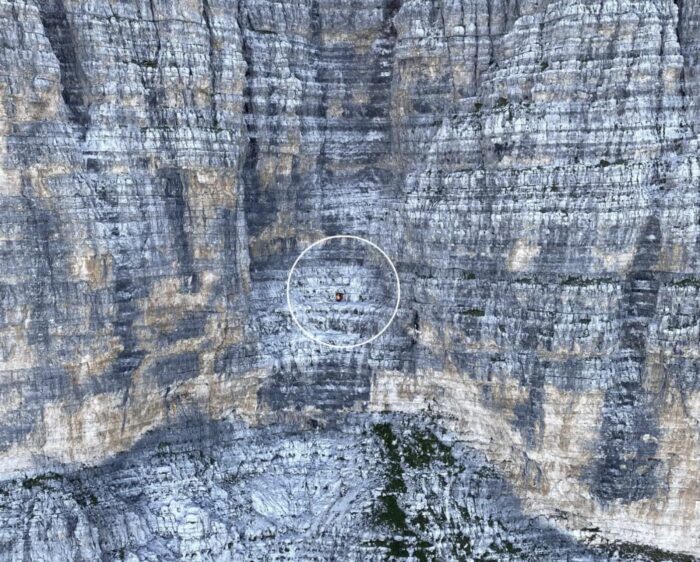
A Korean couple stranded without safety gear in the middle of a Via Ferrata in the Dolomites. Photo: CNSAS
Data from 2024
The current accident rate may lead to a record number of deaths this summer in the Italian Alps, but accidents have steadily increased over the last few years. In 2024, 466 people died, and the CNSAS rescued 11,789 people, according to the data on the CNSAS website. Almost half the yearly rescues took place in summer, with 14.4% in July, 18% in August, and 8.6% in September.
Falls caused 43.2% of the rescues, inability to deal with some outdoor predicament amounted to 26.5%, and sickness led to a further 12.7%. Throughout the year (not only in summer), hikers accounted for 44.3% of the rescues, skiers were 14%, mountain cyclists 6.8%, alpinists 5.9%, mushroom pickers (!) 3.4%, and people at work 2.6%. Finally, 3.6% of the accidents took place on Via Ferrata and climbing routes.
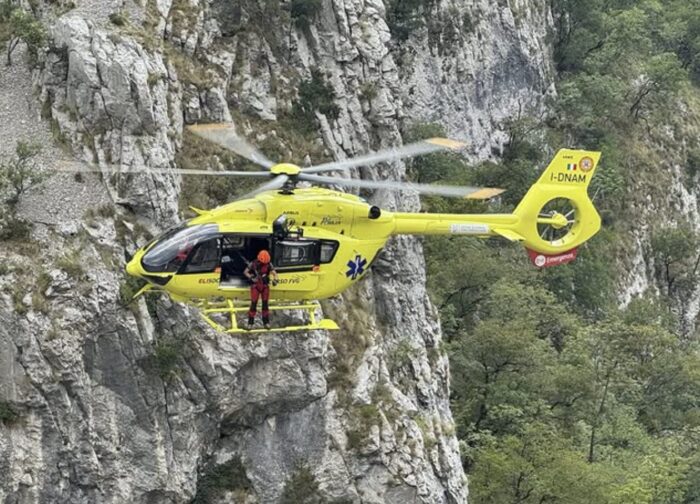
Rescuers prepare to help a young man who injured himself hitting the rocks while jumping into a pond. Photo: CNSAS
The most common type of person in need of rescue was Italian men between 50 and 60 (16.%). They comprised 18% of all rescues.
By nationality, Germans followed Italians in the number of rescues needed, followed by French and Austrians. People over 50 were most likely to run into problems. In all, 68% were male and 32% were female.
